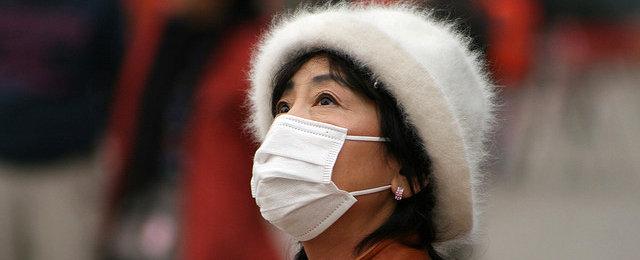Severe pollution is at the centre of almost every conversation in the Chinese capital. When neighbours greet each other in the morning on their way to work, they rarely ask about families or discuss the weather. Through the cumbersome and uncomfortable masks that cover half of their faces, day after day, they complain of the horrible pollution that chokes the city of Beijing.
Normally the small talk includes an “it’s getting worse and worse” and “there is nothing we can do about it”. It is a type of despondent resignation towards a situation they have long been concerned about, but which feels beyond their control.
Nonetheless, the Communist Party does have the resources to fight against the elements if and when they deem it necessary. They did it in 2008, during the Olympic Games. And the new leadership is now pursuing the same strategy once again by virtually bringing Beijing to a standstill from the 7th to 11th of November in order to ensure the city has clean air and blue skies during the APEC summit.
The restrictive measures include the temporary closure of hundreds of factories within a 200 kilometers radius of Beijing. The number of cars and trucks allowed to ride the streets and highways will also be reduced. A week of public holidays has also been declared, which mainly affects public servants, universities and schools in Beijing, aimed at minimizing population movement. Good air quality during the APEC Summit is “the priority of priorities”, said Chinese Vice-Premier Zhang Gaoli when announcing these temporary measures. In other words, the priority of the world’s second largest economy is to offer a good impression to international leaders who will be holding meetings in Beijing.
Overall, the APEC summit constitutes an important moment for China. Yukon Huang, former World Bank China Director and Senior Associate at the Carneige Endowment Asia Program, has yet to figure out why information about China is so frequently wrong or misleading for a country that attracts so much attention. Huang argues that global perceptions of China are hampered by a constant lack of precision. China has features of both a developed and developing country. “It’s hard to understand China because it’s in the middle. But people try to put it either in one place or the other”, he explains.
The idea that domestic consumption should be the engine of economic growth as a solution to China’s unbalanced growth is erroneous says Huang.
“Consumption in China is the highest in the world,” he explains. The key is to determine why there an imbalance between investment and consumption. “Uneven growth is not a national issue. Falling consumption as a share of GDP turns out to be true only in Western provinces, where there has been large, concentrated investment since the 90s”. Huang provides a long list of distorted views about China, including an alternative approach to hot topics such innovation, shadow banking, domestic debt and the productivity of SOEs amongst others.
Likewise, Huang points out that the same economic principles can be applied to any country in the world. The most important thing is to understand the context- which in China´s case is often misunderstood. Therefore a lack of understanding persists as a cycle of confusion and misinformation.
“If the conclusions about China are wrong, then the policy prescriptions are also wrong. And if the policy prescriptions are wrong, then tensions between China and the West persist”, says Huang






Be the first to comment on "China fighting the elements"